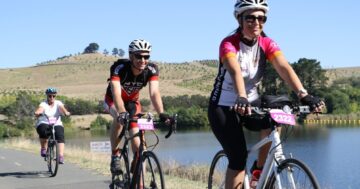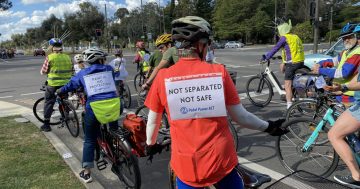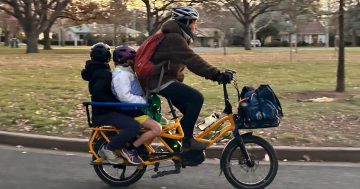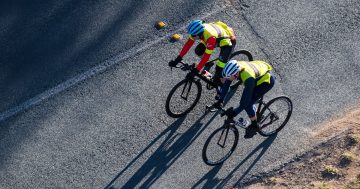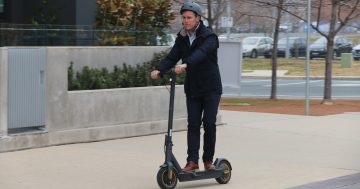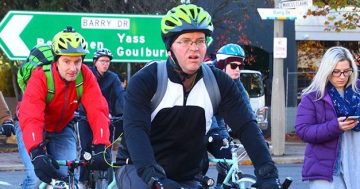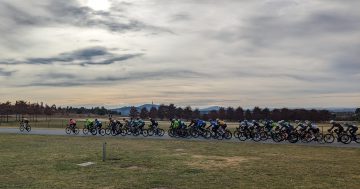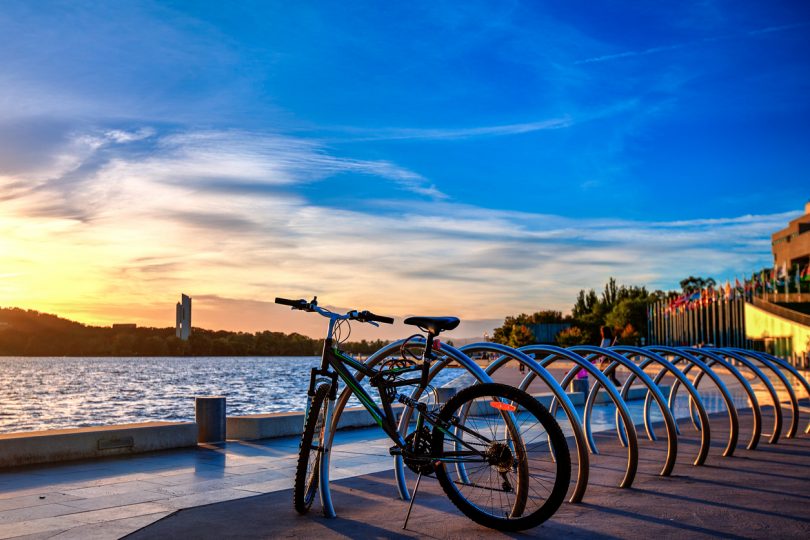
More than a quarter of Canberrans already cycle recreationally every week. Photo: File.
“If you design a city for cars, it fails for everyone, including drivers. If you design a multi-modal city that prioritises walking, biking and public transport, it works better for everyone, including the drivers.”
That’s Brent Toderian, a global thought-leader in advanced urbanism, city planning and urban design.
But those Canberrans who choose to ride already know the guilty secret: cycling is the quickest, easiest and cheapest way to get around. You travel for free, park outside the door for nothing and there are no traffic holdups. We also get the benefit of all that healthy exercise. The added kudos for helping save our planet is just a bonus.
Those suave, supposedly eco-friendly Europeans, have known this for years. People in Copenhagen don’t cycle to save the planet. They cycle in large numbers because it’s quick, simple, healthy, cheap and convenient.
Cycle to work or school a couple of times a week and you could save thousands each year. Tempted to give it a spin? The ACT Government’s Climate Change Strategy 2019-25 is going to make it even easier to make cycling your first transport choice. The strategy aims to:
- Improve cycling conditions in key transport corridors
- Prioritise cycling and infrastructure to improve the safety and connectedness of our cycle network
- Trial financial incentives to encourage the uptake of electric bikes
- Explore options for a reward scheme to increase cycling
- Implement a car-free day in some areas to showcase how awesome walking and riding can be without cars
- Investigate options for dedicating a greater proportion of road and public space to sustainable transport modes
- Improve the code of practice and standards for roads, paths, and end-of-trip facilities.
But wait there is more! The government is also going to:
- Expand the role of ACTSmart to work with schools, businesses and households to promote active travel choices
- Expand the Active Travel Office and school-based active travel initiatives to get more kids on bikes, and more people riding to work.
There is a lot of detail to be filled in, but it’s exciting to see such a positive commitment to supporting the uptake of active travel.
Canberrans are more aware than most of the risks to our fragile biosphere from global warming, and of the need to act. I think we can be proud of our achievements so far: we have switched to recycling, we buy power-efficient appliances and we have embraced solar panels.
It is incredible to think that our city will be 100 per cent powered by renewable electricity next year.
More than a quarter of Canberrans already cycle recreationally every week. In some areas of the city, thousands of people are already choosing to ride for transport. In North Canberra, more than 11 per cent of people cycle to work.
With the help of range-boosting and hill-smoothing electric bikes, there is even more scope to get people commuting by bike throughout the ACT.
The average car commute in Canberra is only 13 kilometres, and more than one-third of commutes are under 10 kilometres. With an E-bike these distances will be even easier to cover, especially with commitments to improve the infrastructure and priority for bikes.
You will save time and money, you will feel better, your sex life will improve, and you will be less likely to die young from obesity, cancer, heart disease, diabetes and stroke.
And when we absolutely need to use a car, here’s the good news:
- The roads will be less congested as more people choose other travel options
- Registration will cost less because the government is exploring new registration incentives that mean when we drive less, we pay less
- With petrol and diesel engines being phased out, you will get help to access cars which cost a lot less to run.
It’s a bold, ambitious, and innovative strategy. It will involve us rethinking the travel habits of a lifetime. But I think we are ready. Now is the time to start our (human-powered) engines.
Ian Ross is the Chief Executive Officer of Pedal Power ACT.












